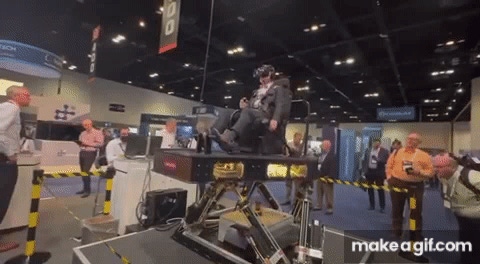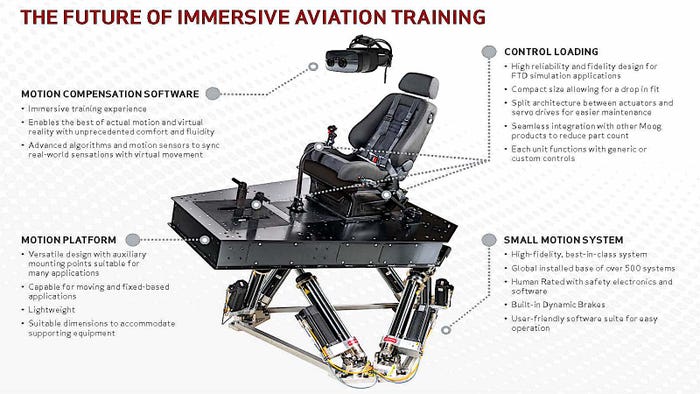Moog Is Sick of Simulator-Induced Motion Sickness
Moog, Inc. solves flight simulators’ motion sickness problem.

Simulators for driving and ones for flying provide a reasonably convincing impersonation of movement through 3D space while sitting in a seat that only moves up and down and side-to-side. But the accuracy of that motion in matching the accompanying video is often not good enough to fool users’ brains.
The disconnect between perceived motion and the images that go with it often causes motion sickness that can limit users’ ability to spend time in the simulator. Moog has a new system that synchronizes movement and video by compensating for movement of the motion base and changes to the position of the virtual aircraft by making adjustments milliseconds before the simulator generates an image for the pilot to see.
Moog demonstrated this latest flight training device (FTD) technology at the I/ITSEC 2023 show, where attendees could try the system for themselves to gauge the effectiveness of Moog’s synchronization system for preventing motion sickness. The FTD incorporates these three significant components:
Motion compensation software employing advanced algorithms and motion sensors to marry real and virtual elements.
Control loading technology that seamlessly integrates the cyclic, collective, and pedals with Moog’s motion base and head-mounted display (virtual reality goggles).
An electric 6-degree-of-freedom motion platform. The human-rated technology includes safety electronics and built-in dynamic brakes.

MOOG, INC.
“We’ve known for years that virtual reality and mixed reality would find their way into simulation, but, until now, there hasn’t been a way to prevent the uncomfortable mismatch between what pilots see from inside the simulator and what they feel through a motion base,” said Jean Paul Warmerdam, global engineering manager for Moog said at the show. “The demonstrator we’ve brought to I/ITSEC synchronizes visual and motion cues in a way that’s never been done before; it’s a seamless, real-world sensation.”
Additionally, Moog showed off its G-Seat, which can have as many as nine moving elements in its seat bucket, seat pan, back pad, shoulder harness, and seat belt. The G-Seat’s cueing system is designed to provide motion cues to pilots in all three translational axes.
About the Author(s)
You May Also Like





